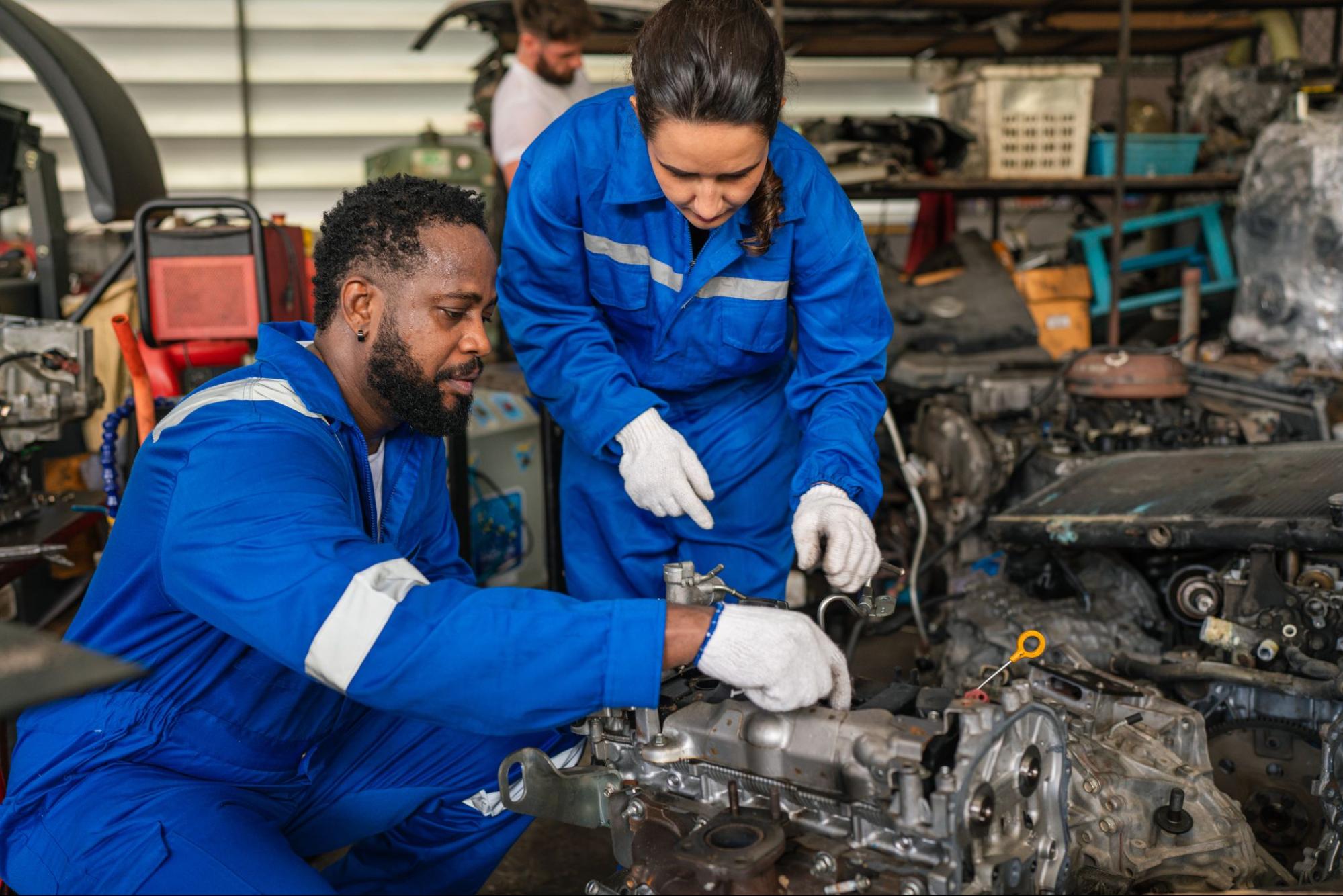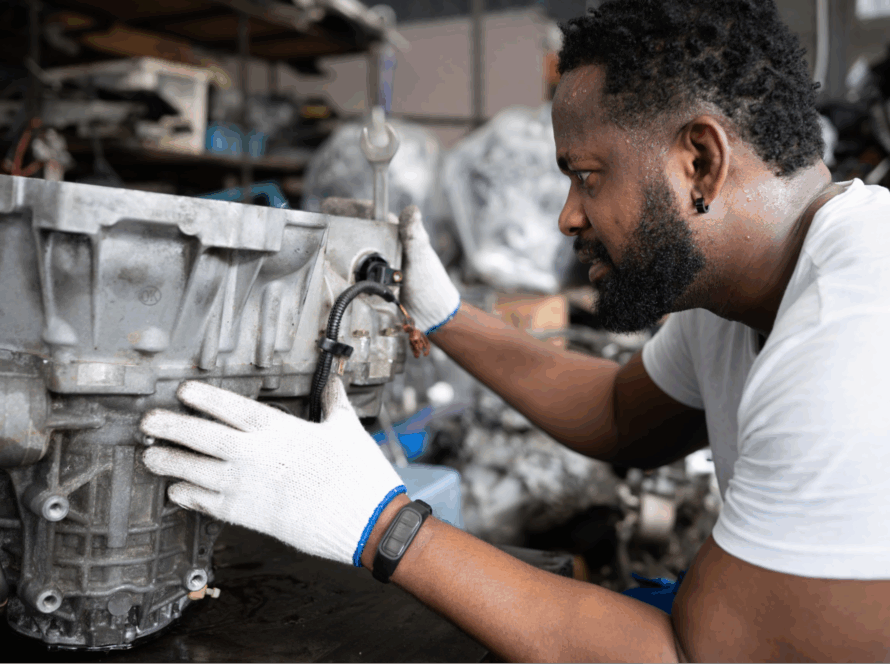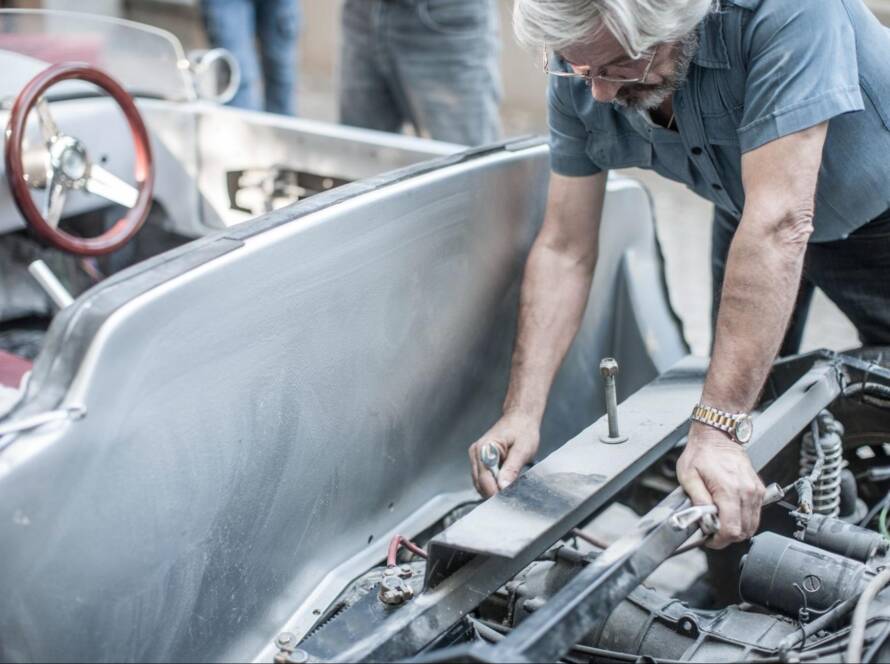An engine rebuild isn’t just a repair job. It’s a serious investment in your vehicle’s future. Whether you’re keeping a classic car alive or trying to avoid the price of a new engine, the decision comes with questions. One of the most common questions is: What parts get replaced when you rebuild an engine? Understanding what goes into it can save you time, money, and future headaches.
What it Means to Rebuild Engines
Rebuilding an engine means stripping it down and restoring it to reliable working conditions. That involves replacing worn-out parts, cleaning or machining surfaces, and reassembling everything to spec. It’s not the same as swapping in a brand-new engine, and it’s more involved than just fixing one broken part. A rebuild is about long-term durability and consistent performance.
Engine Rebuilding vs. Engine Replacement
When you replace an engine, you typically install either a new or a remanufactured one. That’s like giving the car a brand-new heart. Rebuilding, however, preserves the original engine block and core. The mechanic restores it using new internal parts and precision machine work. This route keeps the car’s original engine ID and usually costs less than a complete replacement.
Why Rebuild Instead of Replace
Many people choose to rebuild because it strikes a balance between cost and reliability. A replacement can be expensive and might not match the vehicle perfectly. If the block is still solid, rebuilding is a smart alternative. It’s also valid for cars with sentimental value or rare parts. Additionally, rebuilding allows for more control over which components are installed in the engine.
Core Components Typically Replaced to Rebuild Engines
Every engine rebuild targets internal wear. Mechanics replace high-friction parts and those subject to constant heat and pressure. The goal is to restore performance and prevent future failure.
Pistons and Piston Rings
Pistons and rings deal with constant movement and combustion. Over time, they wear out, resulting in increased oil consumption and power loss. New pistons restore proper compression and balance. Rings help seal combustion gases and reduce oil burn. Replacing them is key to a rebuild’s success.
Bearings (Main and Rod)
Bearings allow crankshaft and rod movement without metal-on-metal contact. When they wear, they can spin or seize, destroying the engine. Mechanics replace both main and connecting rod bearings during a rebuild. These tiny parts support heavy loads and high speeds. Fresh bearings help the crankshaft rotate smoothly under pressure.
Gaskets and Seals
Engines contain fluids under pressure, and gaskets keep those fluids from leaking. Over time, heat and pressure cause gaskets to crack or shrink. All major gaskets and seals are replaced during a rebuild, including head gaskets, valve cover gaskets, and rear main seals. Failing to replace these components can lead to leaks or mixing of coolant with oil. New seals are non-negotiable for reliability.
Timing Chain or Timing Belt
The timing system synchronizes engine valves and pistons. If it fails, the engine may misfire or cease to function entirely. Chains and belts wear down with age, and a rebuild is the ideal time to replace them. Most rebuilds include a new timing set to avoid future problems. A skipped or broken belt can mean instant engine damage.
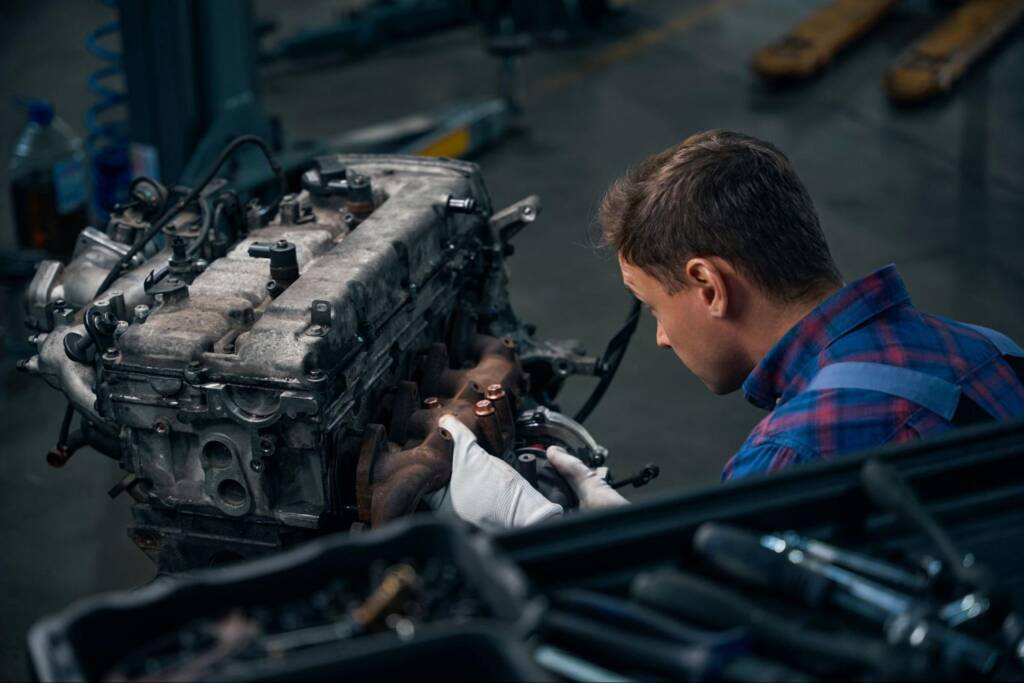
Oil Pump
The oil pump circulates oil throughout the engine to reduce friction and cool its components. A weak or failing pump starves components of oil, increasing wear. Since pumps are internal and hard to inspect, they’re replaced during a rebuild. New oil pumps help maintain pressure stability and extend the engine’s lifespan. This small part protects every moving piece inside.
Camshaft and Lifters
The camshaft controls valve movement. Lifters ride on the cam and push the valves open and closed. Wear here leads to ticking sounds, misfires, and poor power delivery. Replacing a worn cam and lifters restores engine timing and flow. This step is crucial for high-mileage engines.
Cylinder Head and Valve Job
The cylinder heads house the intake and exhaust valves. If they warp, crack, or leak, the engine loses power and may overheat. Rebuilds often include resurfacing the head and reseating the valves. New valve guides and seals are also installed. A proper valve job tightens combustion and boosts efficiency.
Crankshaft (If Damaged)
The crankshaft converts piston motion into rotary motion. If it’s scored or warped, it can’t be reused. Some cranks are re-machined to smooth surfaces and restore balance. In more severe cases, they’re replaced with a remanufactured unit. The decision depends on wear level and cost.
Additional Parts Often Replaced During Engine Rebuilds
Beyond the core internals, other components are often replaced for improved performance. Some of these aren’t inside the engine block but support vital systems. Including them in a rebuild prevents future issues.
Water Pump
The water pump circulates coolant through the engine and radiator. Old pumps can leak, corrode, or fail to spin. A failing pump causes overheating and severe damage. Rebuilders usually replace the water pump during an engine rebuild. It’s a simple step that avoids big trouble later.
Spark Plugs and Ignition Components
Spark plugs ignite fuel in each cylinder. Bad plugs misfire and waste fuel. During a rebuild, old plugs and ignition wires get replaced. Mechanics also inspect and often replace coil packs or distributors. Fresh ignition parts help the rebuilt engine fire cleanly and run smoothly.
Fuel Injectors or Carburetors
Fuel delivery systems wear out or clog with deposits. If the engine has a carburetor, it’s often rebuilt or swapped out. Fuel injectors are either cleaned using ultrasonic tools or replaced. Clean fuel delivery ensures the right air-fuel mix. Replacing them helps avoid hesitation and a rough idle after the rebuild.
Sensors and Engine Electronics
Modern engines rely on sensors to manage everything from airflow to fuel pressure. Some rebuilds include replacing faulty or aging sensors, such as oxygen sensors, camshaft sensors, and knock sensors. Damaged electronics send false signals, which affect performance. Swapping faulty sensors supports a smoother startup and improved fuel efficiency. It also prevents diagnostic errors post-rebuild.
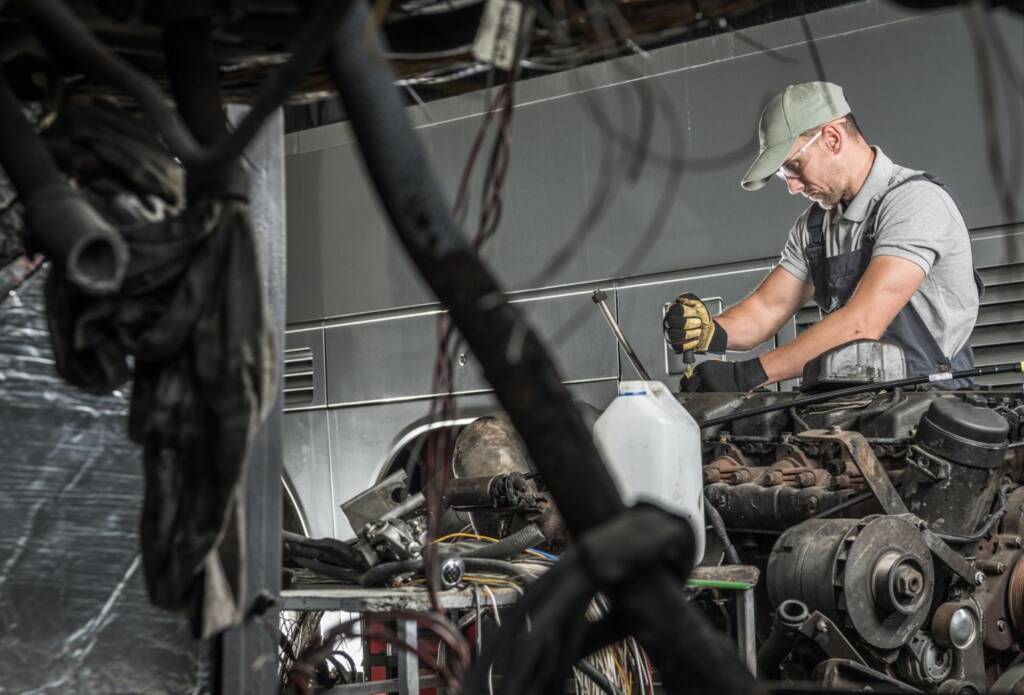
Machine Work and Inspection During Engine Rebuilds
Machine work goes hand in hand with part replacement. Rebuilding engines isn’t just about swapping components. It’s also about reshaping and cleaning parts to factory standards.
Cylinder Boring and Honing
Cylinder walls wear down after thousands of miles. If pistons move loosely, the engine burns oil and loses compression. Machinists bore out the cylinders and hone them for the new pistons. Oversized pistons are used to match the new bore. It ensures tight sealing and smooth motion.
Surface Resurfacing
Flat surfaces are essential to gasket sealing. Warped surfaces create gaps that lead to coolant or oil leaks. Mechanics resurface cylinder heads and sometimes the block deck. This machining step ensures tight contact with the head gaskets. A clean surface prevents leaks and overheating.
Balancing and Blueprinting
Balancing the rotating assembly prevents vibration and uneven wear. Blueprinting aligns all tolerances to match the original specs or performance targets. This process includes weighing pistons, rods, and crankshaft components. Proper balance reduces stress on internal parts. The result is smoother operation and longer engine life.
Parts You Might Not Replace When You Rebuild Engines
Not everything inside an engine is damaged or worn. Rebuilders know which parts still have life in them. With inspection and proper tools, they decide what stays.
Reusable Parts After Inspection
Parts like rocker arms, valve covers, or the oil pan may not need replacing. If they show no cracks or significant wear, they’re cleaned and reused. The same goes for some gears or brackets. These non-critical components save money without affecting reliability. Skilled engine rebuilders inspect every part before making a decision.
Cost-Benefit Decisions
Engine rebuilds aren’t all-or-nothing jobs. Smart decisions balance cost and function. Some upgrades may not add value depending on the engine’s age or intended use. Experienced builders know when to reuse parts and when to replace them. They aim to protect both your wallet and your engine’s future.
Rebuild Engines With the Right Materials and Upgrades
Choosing the right parts isn’t just about replacement; it’s about ensuring optimal performance and reliability. It’s about making the engine stronger and more durable than before. During a rebuild, some components can be upgraded for improved performance or extended lifespan. These decisions depend on how you drive, your budget, and the engine’s design.
Forged vs. Cast Parts: What’s Worth the Investment?
Forged engine parts are made under pressure, which makes them denser and stronger. They’re used in performance builds or engines that handle high loads. Cast parts are more common in standard rebuilds due to their lower cost. For most daily drivers, cast pistons and rods suffice. But if you tow, race, or run a turbocharged setup, forged parts are often worth the upgrade.
Upgrades That Make Sense During a Rebuild
Not every upgrade is expensive or extreme. Some simple improvements make the engine more reliable over time. Multi-layer steel (MLS) head gaskets seal better than older composite types. High-volume oil pumps improve lubrication, especially in older or larger engines. Swapping standard rubber hoses for silicone versions resists heat and cracking. These upgrades can be incorporated into many rebuilds without increasing the budget.
Rebuild Engines and Get More Than Just a Fix
A tired engine drains your wallet slowly through poor mileage, constant top-offs, and roadside anxiety. Rebuilding doesn’t just restore what’s broken; it also rebuilds what’s lost. It gives your vehicle a second wind, one that performs smarter, runs cleaner, and lasts longer. If your engine’s been asking for help, it’s time to answer before it stops asking altogether.
Want more expert insights on keeping your engine strong? Visit the Dark Night Specialties blog and stay ahead of every repair.

